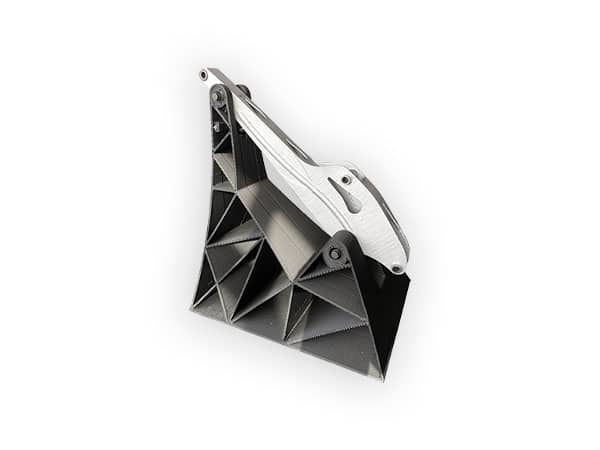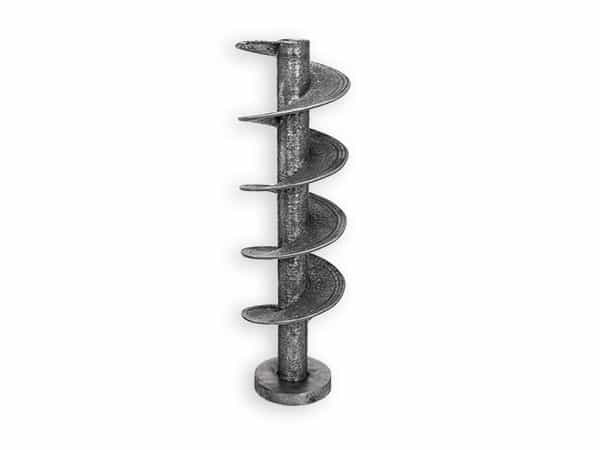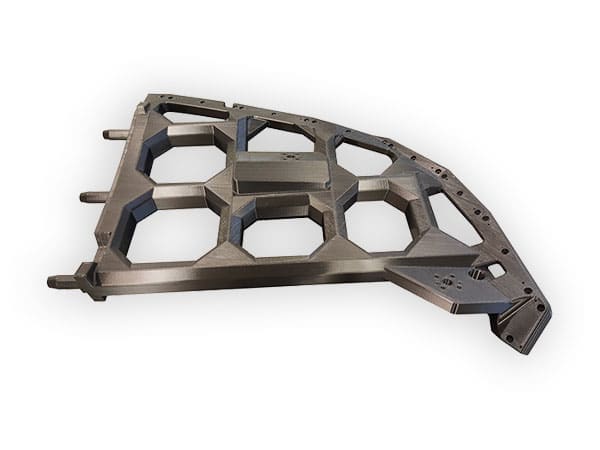3D printing, also known as additive manufacturing, is one of the newest and fastest-developing manufacturing technologies in the world. It opens up new avenues in the design and production of rapid prototypes, production parts, tooling, and much more.
With over a decade of trailblazing experience, we provide one of the industry’s most comprehensive selections of metal and plastic 3D printing technologies and materials for any application, whether small or large, simple or complex, prototype or production. Our experts work closely with your team on everything from identifying and evaluating 3D printing candidates to exploring design improvements and cost savings.
3D printing is a revolutionary technology that is changing manufacturing forever. It has several advantages that can benefit the heavy equipment and industrial machinery industry, leading to lighter parts, shorter lead times, and lower costs. Most of the benefits of 3D printing come from the significantly expanded design freedom that it allows for, which makes highly customized parts with unusual geometries and features that were previously very difficult to manufacture (or even impossible) a reality.
We offer one of the heavy equipment and industrial machinery industry’s most comprehensive selections of 3D printing technologies and materials, which are regularly applied to a variety of demanding applications, including prototyping, production parts, tooling, and more. Click on each technology below for more information on how it works and its history, benefits, applications, available materials, general tolerances, and more.
Wire arc additive manufacturing is a 3D printing technology in which a wire feedstock is melted and deposited layer by layer by a robotic arm to build three-dimensional objects. It has a much larger build size and a significantly faster deposition rate than other metal 3D printing technologies, which is combined with good mechanical properties and a wide range of materials. WAAM is a great fit for the production of large metal parts and tooling for the heavy equipment and industrial machinery industry.
Build size: 4 x 5 x 7 feet (1.2 x 1.5 x 2.1 m)
Direct metal laser sintering is a 3D printing technology that uses a laser to sinter metal powder into a solid structure, allowing for the production of complex shapes and geometries with high accuracy and repeatability. It has a wide range of applications in the heavy equipment and industrial machinery industry, including prototyping and production parts.
Build size: 10 x 10 x 10 inches (25.4 x 25.4 x 25.4 cm)
Metal binder jetting is a 3D printing technology that uses a print head to deposit a liquid binding agent onto a bed of metal powder to create a solid part layer by layer. It offers fast build speeds, low cost, and the ability to produce complex geometries with high accuracy and good surface finish, making it suitable for a wide range of applications in the heavy equipment and industrial machinery industry, including prototyping and production parts.
Build size: 15 x 10 x 10 inches (38.1 x 25.4 x 25.4 cm)
Fused deposition modeling is a 3D printing technology in which a material is melted and extruded through a nozzle to build up an object layer by layer, and is widely used for its fast production speed, low cost, and ability to create complex shapes, making it a popular choice for prototyping, production parts, and tooling components in the heavy equipment and industrial machinery industry.
Build size: 24 x 36 x 36 inches (61 x 91.4 x 91.4 cm)
Multi jet fusion is a 3D printing technology that uses a high-resolution print head to selectively deposit droplets of a liquid binding agent onto a bed of powdered material, allowing for the creation of complex and accurate parts with high resolution and good mechanical properties. It has a wide range of applications in the heavy equipment and industrial machinery industry, including production parts and prototyping.
Build size: 15 x 11 x 15 inches (38.1 x 27.9 x 38.1 cm)
Selective laser sintering is a 3D printing technology that uses a high-power laser to fuse small particles of plastic into a solid object, resulting in complex shapes and high-quality parts with excellent mechanical properties and thermal stability, making it suitable for various applications in the heavy equipment and industrial machinery industry, such as prototyping, production parts, and tooling components.
Build size: 13 x 13 x 20 inches (33 x 33 x 50.8 cm); glass-filled materials can extend to 26 x 15 x 23 inches (66 x 38.1 x 58.4 cm)
PolyJet 3D printing is a type of additive manufacturing that uses photopolymer jetting technology to produce high-resolution, smooth-finish parts with the widest range of material properties and colors of any 3D printing technology, making it ideal for prototyping and small batches of end-use parts in the heavy equipment and industrial machinery industry.
Build size: 19.3 x 15.4 x 7.9 inches (49 x 39.1 x 20.1 cm)
Stereolithography is a 3D printing technology that uses an ultraviolet laser to cure liquid resin into solid parts, allowing for the rapid production of complex geometries with high accuracy and detail, making it a useful technique for prototyping, production parts, and tooling components in the heavy equipment and industrial machinery industry.
Build size: 29 x 25 x 21 inches (73.7 x 63.5 x 53.3 cm)
Description | Notes |
|---|---|
General tolerances and design guidelines apply before secondary finishing or post-processing unless otherwise specified. | |
Part size | We can 3D print parts up to 24″ x 36″ x 36″. Larger parts can often be printed in sections and bonded (or see our large-scale 3D metal printing services). |
Minimum feature size | 0.030″ – 0.060″ |
Minimum wall thickness | 0.020″ – 0.060″ |
Clearance between features | >0.030″ |



Speak to a heavy equipment and industrial machinery industry 3D printing expert today! Our team is standing by, ready to help answer questions or get started on a quote for your project.